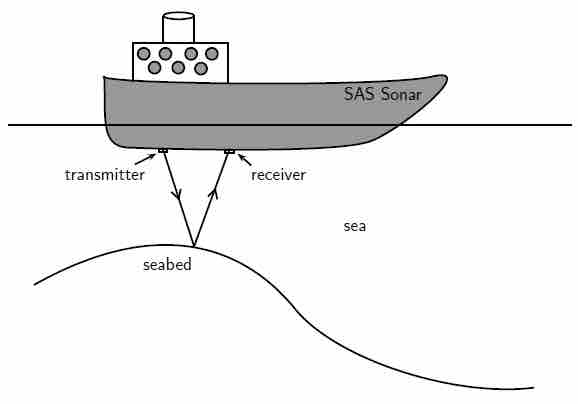The controlled use of sound waves has many applications in science. Controlled reflection of such waves allows images to be received.
Ultrasound
Ultrasound is sound with a frequency higher than 20 kHz. This is above the human range of hearing. The most common use of ultrasound, creating images, has industrial and medical applications. The use of ultrasound to create images is based on the reflection and transmission of a wave at a boundary. When an ultrasound wave travels inside an object that is made up of different materials (such as the human body), each time it encounters a boundary (e.g., between bone and muscle, or muscle and fat), part of the wave is reflected and part of it is transmitted. The reflected rays are detected and used to construct an image of the object.
Sonar
illustrates how a ship on the ocean utilizes the reflecting properties of sound waves to determine the depth of the ocean. A sound wave is transmitted and bounces off the seabed. Because the speed of sound is known and the time lapse between sending and receiving the sound can be measured, the distance from the ship to the bottom of the ocean can be determined. This technique is called sonar (originally an acronym for SOund Navigation And Ranging).

Sonar
Ships on the ocean make use of the reflecting properties of sound waves to determine the depth of the ocean. A sound wave is transmitted and bounces off the seabed. Because the speed of sound is known and the time lapse between sending and receiving the sound can be measured, the distance from the ship to the bottom of the ocean can be determined.
Just as ships on the ocean, certain animals, like dolphins and bats, make use of sounds waves (sonar) to navigate or find their way. Ultrasound waves are sent out then reflected off the objects around the animal. Bats or dolphins then use the reflected sounds to form a "picture" of their surroundings (this is known as echolocation).